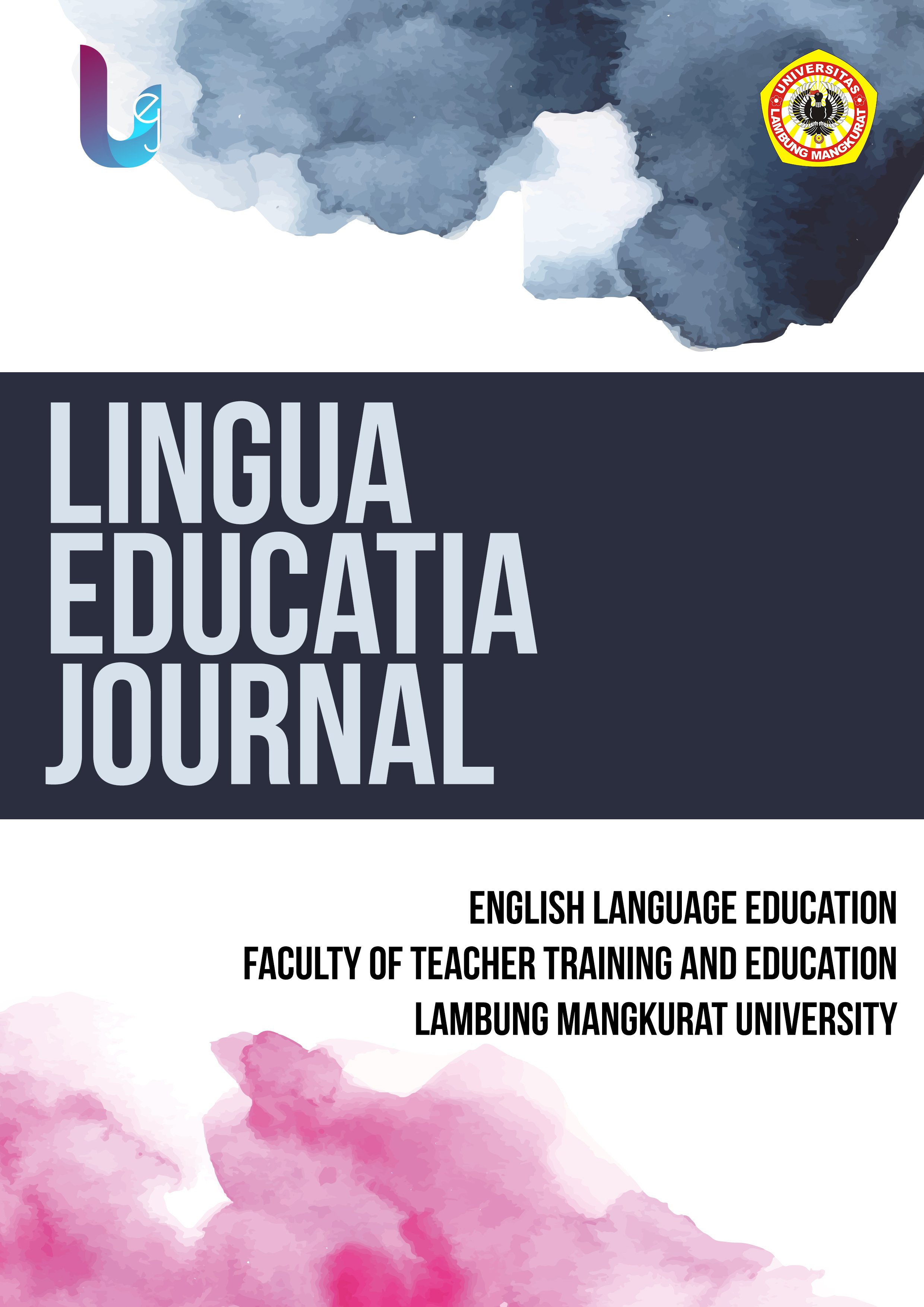AN ANALYSIS OF COOPERATIVE PRINCIPLE (MAXIMS) WITHIN THE DIALOGUES OF “WHEN ENGLISH RINGS A BELL” ENGLISH TEXTBOOK
Abstract
For attaining the conversation goal, the speakers are required for fulfilling the cooperative principle (Maxims) proposed by Grice, namely the maxim of quality, quantity, relevance, as well as manner. Therefore, learning maxims within dialogues is crucial to ease the students in attempting comprehension. Hence, due to its importance, this research aimed to discover the maxims types which are flouted within the dialogues of the English textbook “When English Rings a Bell,” particularly for the Eighth-Graders in Indonesia. The analyst utilized descriptive qualitative method for carrying out this study. Besides, documentation was also utilized for analysing the acquired data from the “When English Rings A Bell” English textbook for the Eighth-Graders. The analyt attempted to discover the varieties of maxims which are flouted within the dialogues of the English textbook. Based upon the data analysis, the result showcased that there are 66 dialogues (19,13%) containing maxim of quantity, 96 (27,83%) containing maxim of quality, 92 (26,66%) containing maxim of relevance, as well as 91 dialogues (26,38%) containing maxim of manner. Meanwhile, dialogues that encompass flouting maxim of quantity are 30 dialogues (76,92%), 0 dialogues (0%) involved flouting maxim of quality, four dialogues (10,26%) encompassed flouting maxim of relevance, and five dialogues (12,82%) contained flouting the maxim of manner. Thus, the most flouting maxim is quantity and zero for flouting the maxim of quality due to the importance of honesty for acquiring other people’s trust. Furthermore, the teachers are proposed for teaching these fundamental maxims to the students for upgrading and enhancing their speaking mastery which resulting in a good conversation.
References
Febridaya, V. (2018) Identification Conversational Implicature of English Education Department Students at Tarbiyah and Teacher Training Faculty of Alauddin State Islamic University. Sarjana’s Thesis. Alauddin State Islamic University of Makassar
Grice, H. P. (2004). Logic and conversation. Berkeley. University of California
Griffiths, p. (2006). An Introduction to English Semantics and Pragmatics. Edinburgh University Press Noviyana, W. (2016). The Analysis of Dialogues in A Textbook Entitled Bahasa Inggris “When English
Rings A Bell” Year VIII Using Cooperative Principle (Maxim) And Its Application to Teach Speaking at The Eighth Grade Students of Junior High School. Sarjana’s Thesis. Purworejo Muhammadiyah University.
Nurzani, A. H. (2015). A Pragmatic Analysis of Conversational Implicature in English Zone Coursebook for Senior High School Students Year Xi. Sarjana’s Thesis. Faculty Of Languages and Arts State University of Yogyakarta
Rahardjo, M., (2010). Triangulasi dalam Penelitian Kualitatif. [online]. Tersedia: https://www.uin- malang.ac.id/r/101001/triangulasi-dalam-penelitian-kualitatif.htmlDiakses pada [December 12th, 2020]
Sugiyono. (2017). Metode Penelitian Kuantitatif, Kualitatif, dan R&D. Bandung: Alfabeta. Thomas, J. (2013). Meaning in Interaction: An Introduction to Pragmatics. New York. Rouletge.
Umi, I. I. (2019). An Analysis Of Speech Acts Used By English Teacher In English Teaching Learning Process At Smp N 4 Tengaran Satu Atap Semarang In Academic Years 2018/2019. Sarjana’s Thesis. IAIN Surakarta.
Copyright (c) 2024 LINGUA EDUCATIA

This work is licensed under a Creative Commons Attribution-NonCommercial-NoDerivatives 4.0 International License.









